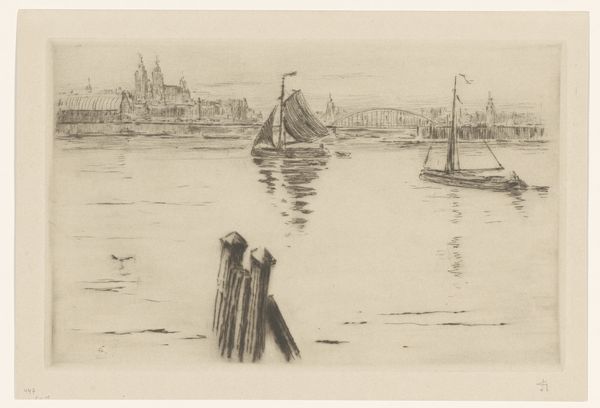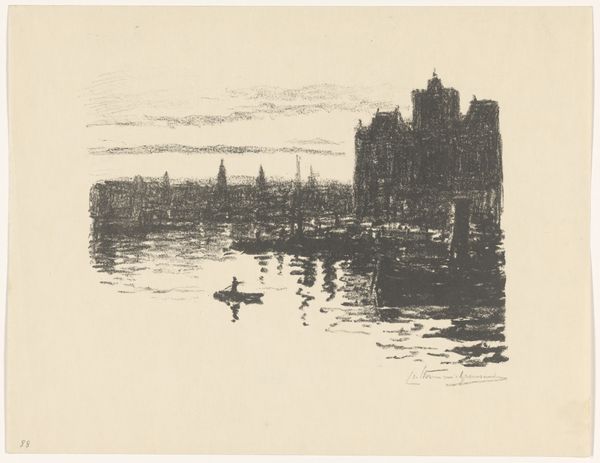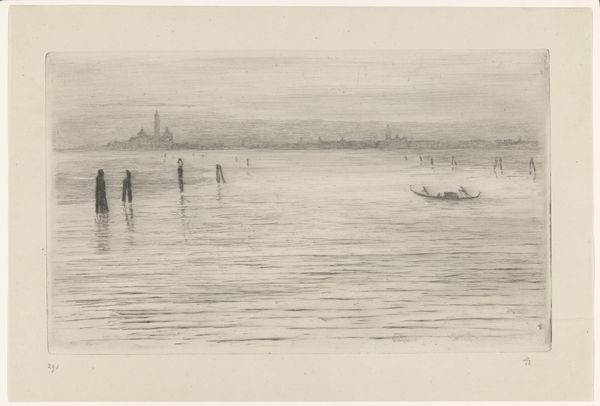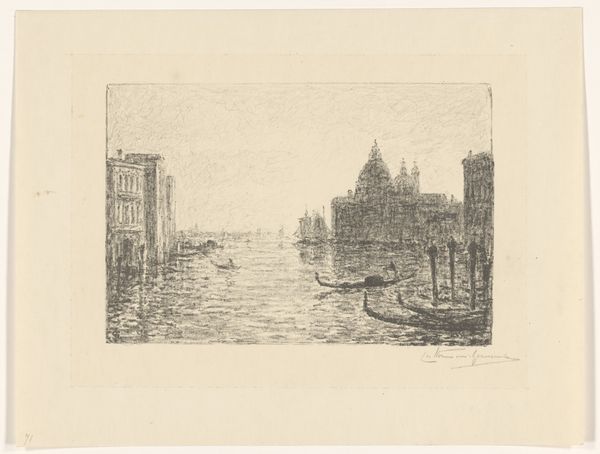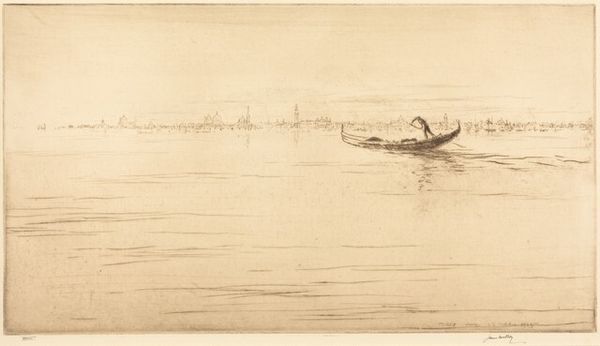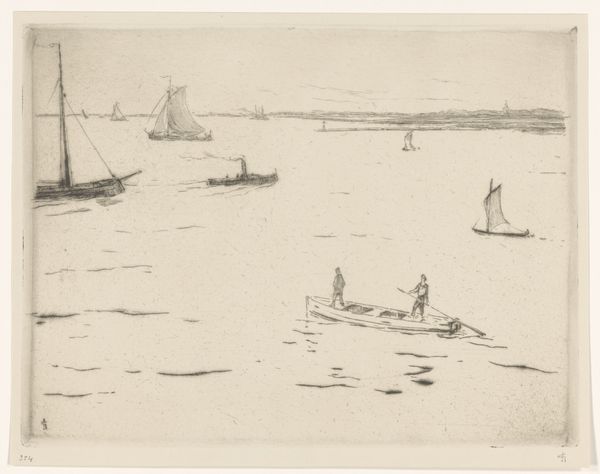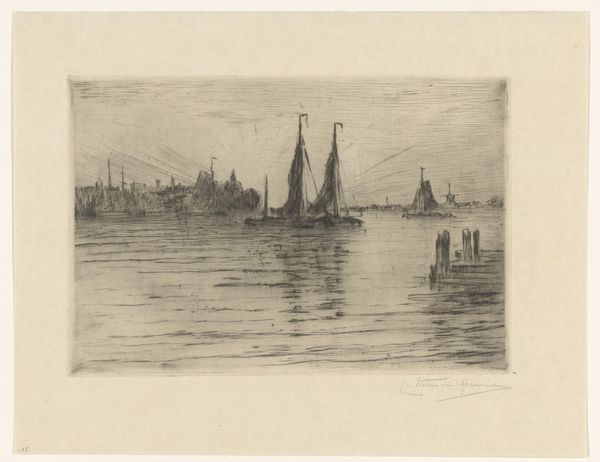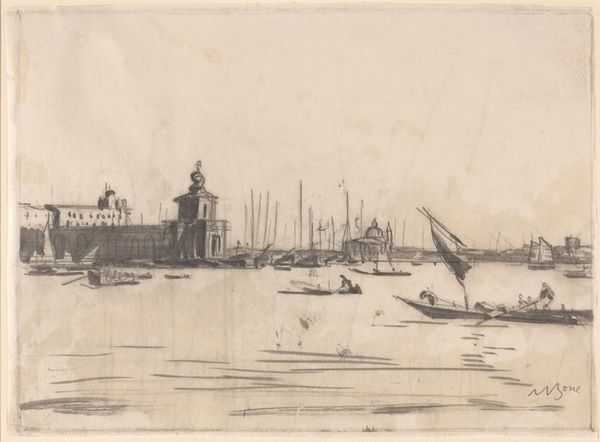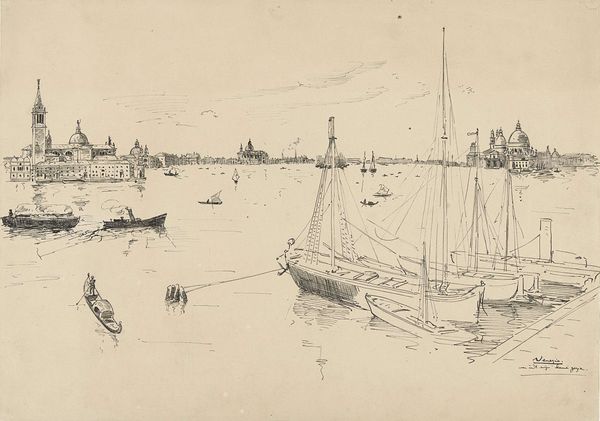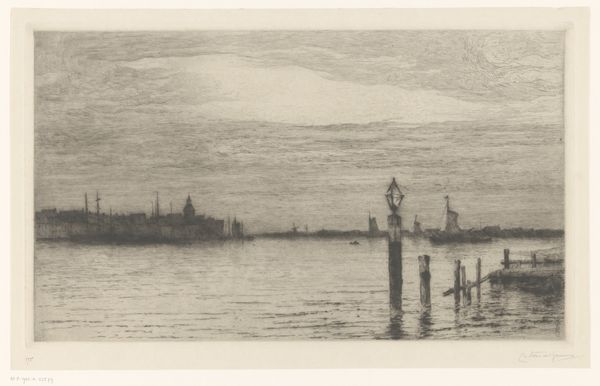
Dimensions: height 250 mm, width 323 mm
Copyright: Rijks Museum: Open Domain
Editor: So, this graphite drawing by Carel Nicolaas Storm van 's-Gravesande, "View of Venice with a Gondola," likely created sometime between 1851 and 1924, really captures a specific mood, almost melancholic, don’t you think? The cityscape is faint, the gondola the main subject, what do you see in this piece, considering its potential symbolism? Curator: I see Venice, not just as a city, but as a symbol itself. For centuries, Venice represented a bridge between East and West, a center of trade, and a crucible of cultural exchange. Look how the artist uses the gondola. It's not merely a boat, but an emblem of Venetian identity, silently navigating the waters. Don't you feel that sense of mystery that shrouds this piece? The buildings almost fading? Editor: Yes, definitely! The way the architecture sort of dissolves into the atmosphere makes it feel like a memory, distant and perhaps idealized. Curator: Precisely! The vagueness of the buildings almost turns into a visual metaphor. A place built on water that might, at some point, return to the sea. How much do you think of Romanticism being a contributing lens for this piece, knowing how preoccupied artists were with landscape and emotion during that time? Editor: That's a great point, and considering that 's-Gravesande was a Romantic painter, maybe Venice, to him, wasn't about documentary but really more a study on mood... what feelings the image could evoke in its viewer. Curator: I agree, and through careful consideration of symbolism and its interplay with memory and emotion, the artist makes it unforgettable. Editor: I hadn’t considered Venice itself as such a potent symbol. This gives me so much more to consider! Curator: Indeed. The artist’s choice of subject offers layers of cultural meaning waiting to be discovered.
Comments
No comments
Be the first to comment and join the conversation on the ultimate creative platform.

